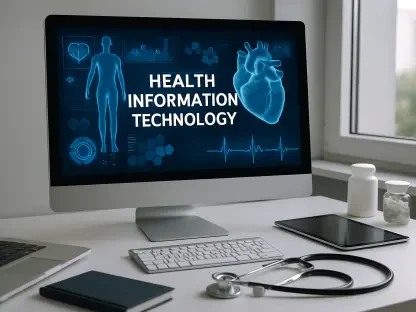The Data Act, which came into force in January 2024 and will be fully applicable by September 2025, is set to revolutionize the medical and health devices sector. This legislation aims to regulate access to and fair use of data generated through the usage of networked devices, fostering a data-sharing economy within the European Union (EU). While it presents numerous opportunities for innovation, it also imposes significant compliance challenges for companies in this sector.
Scope and Applicability of the Data Act
Inclusion of Medical and Health Devices
The Data Act specifically targets networked products, commonly known as Internet-of-Things (IoT) devices. Medical and health devices, such as pacemakers, continuous glucose monitoring (CGM) devices, smart insulin pens, and fitness trackers, fall within its scope. These devices are at the forefront of modern healthcare, providing critical data that can significantly improve patient outcomes. The regulation also encompasses the software associated with these devices, referred to as “connected services.” This inclusivity ensures a holistic approach to data regulation, covering both the hardware and software aspects of medical technologies.
By including such a broad range of devices and services, the Data Act acknowledges the integral role that connected health devices play in patient care. This regulatory framework is designed to facilitate a more seamless and integrated data ecosystem, enabling better communication between devices and healthcare providers. However, the extensive range of covered devices also means that companies must undertake a thorough review of their product portfolios to identify all compliant devices and services. Addressing the diverse requirements for various products can be complex, necessitating detailed planning and resource allocation to ensure full compliance.
Detailed Provisions for Data Access
The Act grants users, whether individuals or legal entities, the right to access usage data and necessary metadata as long as it is “readily available.” This means that the data should not require disproportionate effort to be accessed. Users must be provided with detailed specifics regarding the type, format, scope, and technical information about the product data before any contract is concluded. This provision aims to enhance transparency and empower users by giving them greater control over their data, thus fostering trust and engagement in the digital health ecosystem.
Users of medical and health devices can now expect to receive comprehensive information before purchasing or using a device, which can aid in making informed decisions about their health management. For companies, this entails establishing robust systems to efficiently provide this data and comply with the stipulated guidelines. Furthermore, companies must ensure that their data management practices are sufficiently sophisticated to meet these access requirements without compromising the security or integrity of sensitive health information. Effective data management solutions and clear communication strategies will be essential to meet these expectations while adhering to regulatory standards.
Key Themes and Provisions
User Rights and Data Transfer
Users possess the right to transfer their data to third parties under fair, reasonable, and non-discriminatory (FRAND) terms. This provision ensures that users can share their health data with other service providers, researchers, or healthcare professionals, thus supporting a broader data-sharing ecosystem that can drive medical and technological advances. However, the data controller (the entity controlling the data) can use non-personal product data for purposes such as evaluation only if a contractual agreement with the user permits it. This condition emphasizes the importance of obtaining explicit consent and maintaining transparency in data usage agreements.
This framework is designed to balance user rights with the operational needs of companies, ensuring that data sharing is conducted transparently and fairly. For instance, a patient using a continuous glucose monitoring device might choose to share their health data with an endocrinologist for better disease management. The endocrinologist can then analyze this data to provide more personalized care, potentially improving the patient’s quality of life. Companies will need to navigate the complexities of establishing FRAND terms to facilitate such beneficial data transfers, all while safeguarding user rights and maintaining compliance with the Act.
Risks for Data Owners
One of the primary risks for companies that own the data is the potential exposure of business secrets and valuable proprietary information to competitors. This could happen inadvertently when data is shared under the provisions of the Act. Although the legislation aims to promote data sharing and innovation, it also requires companies to protect their competitive edge by carefully managing their proprietary information. Contractual terms can be established to manage the conditions of data transfer, though the Act imposes limitations, emphasizing fair and transparent dealings.
To prevent unintended exposure of business secrets, the Act suggests technical and organizational measures such as confidentiality agreements, model contract clauses, and the establishment of access controls. Companies need to implement these measures effectively to protect their interests while still complying with the data-sharing requirements. This may involve investing in advanced data encryption technologies, conducting regular audits to ensure compliance, and training staff on the importance of data security. Balancing the need for innovation with the protection of proprietary information is crucial for companies navigating this new regulatory landscape.
Intersection with GDPR
GDPR’s Precedence Over the Data Act
The General Data Protection Regulation (GDPR) retains precedence over the Data Act. Given the personal nature of data generated by medical and health devices, the GDPR’s stringent requirements must be meticulously observed. This means that companies must first ensure compliance with GDPR before addressing the specifics of the Data Act. Particular care is required to distinguish between personal and non-personal data, as each category is subject to different regulatory stipulations. Unlawful data transfer can result in significant fines, and potential discrepancies between defined users in the Data Act versus the actual device users in practice may complicate compliance.
For instance, data collected by a smart insulin pen can include highly sensitive personal health information, which must be handled in strict accordance with GDPR guidelines. Ensuring proper data anonymization and obtaining explicit user consent for any data processing activities are vital steps in this process. Companies must establish clear protocols to differentiate personal data from non-personal data, ensuring that each type of data is processed in compliance with the appropriate regulations. Failure to do so not only risks financial penalties but can also damage a company’s reputation and user trust.
Legal Bases for Data Processing
Legal bases for data processing, particularly sensitive health data, must align with the provisions of GDPR, ensuring transparency obligations are met, and users are provided with appropriate data protection notices. The GDPR outlines several legal bases for processing personal data, including user consent, performance of a contract, and legitimate interests, among others. Companies must carefully evaluate and document the legal basis for each data processing activity to ensure compliance. This process involves conducting thorough data protection impact assessments and implementing privacy by design principles in their products and services.
For example, a fitness tracker company might need to process user data to provide personalized health insights and recommendations. The company must first obtain informed consent from users, clearly outlining how their data will be used and ensuring that users have the option to withdraw their consent at any time. Additionally, companies must implement robust data protection measures, such as encryption and access controls, to safeguard user information. By adhering to these stringent requirements, companies can navigate the complexities of the Data Act and GDPR, ensuring full compliance while fostering user trust and confidence.
Influence of MDR & IVDR Regulations
Compliance with MDR and IVDR
The obligations under the Medical Device Regulation (MDR) and the In-Vitro Diagnostic Regulation (IVDR) exacerbate the compliance landscape for medical devices. These regulations impose strict requirements on the design, manufacture, and marketing of medical devices and in-vitro diagnostic products within the EU. Particularly, Article 3 (1) of the Data Act mandates that networked products and connected services be designed to facilitate easy, secure, and free data access. This “access by design” requirement may necessitate substantial modifications to existing products, potentially triggering a need for new conformity assessments under MDR and IVDR.
These conformity assessments are typically lengthy and resource-intensive processes that involve rigorous testing and evaluation of products to ensure they meet the necessary safety and performance standards. For example, a company producing continuous glucose monitoring devices may need to redesign its products to incorporate secure data access features, such as encrypted data transmission and user authentication mechanisms. These modifications may affect the device’s overall design and functionality, requiring extensive testing and validation to obtain the necessary regulatory approvals. Ensuring compliance with MDR and IVDR, along with the Data Act, presents a multifaceted challenge for companies, demanding significant time, effort, and resources.
Early Adaptation and Compliance
The need for compliance by September 2026 necessitates an early start for product adaptation to meet the new terms. Companies must begin the process of redesigning their products and updating their internal processes to ensure they meet the new regulatory requirements well in advance. This proactive approach will help prevent potential disruptions in product availability and minimize the risk of non-compliance. Engaging with regulatory authorities, industry experts, and legal advisors early in the process can provide valuable insights and guidance, ensuring a smooth transition to the new regulatory framework.
Moreover, companies should invest in continuous education and training for their staff to stay updated on evolving regulatory requirements and best practices. Establishing cross-functional teams comprising experts from regulatory affairs, legal, engineering, and data management can facilitate a more comprehensive approach to compliance. By fostering a culture of compliance and innovation, companies can navigate the complexities of the Data Act, MDR, and IVDR, ultimately enhancing their competitive edge in the market while ensuring the safety and efficacy of their products.
Final Recommendations
Strategic Planning and Execution
Early and methodical adaptation of company processes and medical products to meet the Data Act’s requirements is paramount. Companies should establish comprehensive compliance strategies, including conducting thorough assessments of their current data management practices, identifying potential gaps, and implementing necessary changes. This may involve revising contractual terms to protect business secrets, developing new data access protocols, and enhancing data security measures. Establishing clear roles and responsibilities within the organization for overseeing compliance efforts can help ensure a coordinated and efficient approach.
Particularly, measures for safeguarding business secrets through carefully drafted contractual terms should be established well in advance. These contracts should outline specific terms and conditions for data access and transfer, incorporating confidentiality agreements and access control mechanisms to protect proprietary information. Companies must remain vigilant about upcoming model contract clauses set to be published by the European Commission before September 2025. Staying informed about these developments and adjusting compliance strategies accordingly will be crucial for navigating the evolving regulatory landscape.
Ensuring Data Protection Compliance
Ensuring data protection compliance when dealing with personal data, especially sensitive health information, is crucial. Companies must develop robust data protection policies and practices that align with GDPR and the Data Act, including implementing privacy by design principles, conducting regular data protection impact assessments, and providing clear and transparent data protection notices to users. Additionally, companies should establish processes for obtaining and managing user consent, ensuring that users have control over their data and are informed about how it is being used.
Companies must also keep abreast of developments linked to the broader European Health Data Space, which the Data Act influences. This initiative aims to create a unified framework for health data access and sharing across the EU, further emphasizing the importance of data protection and interoperability in the healthcare sector. By proactively addressing these requirements and leveraging the opportunities presented by the European Health Data Space, companies can enhance their competitiveness and contribute to a more collaborative and innovative healthcare ecosystem. Proactive compliance will be essential to leverage opportunities within the new data-sharing ecosystem.
Conclusion
The Data Act, enacted in January 2024 and set to be fully effective by September 2025, is poised to bring significant changes to the medical and health devices industry. This groundbreaking legislation focuses on regulating access to and equitable use of data generated by networked devices, promoting a data-sharing economy within the European Union (EU).
The primary aim of the Data Act is to unlock the potential of data that is typically siloed within various devices, facilitating a more collaborative environment where data can be shared and utilized across different platforms and stakeholders. By doing so, it is expected to spur innovation and improve healthcare outcomes, as well as inspire new business models and services tailored to the nuanced needs of the healthcare sector.
However, while the prospects for innovation are immense, the Data Act also introduces substantial compliance challenges for companies operating in this domain. Organizations will need to navigate a complex landscape of data privacy, security, and interoperability requirements to align with the new regulations. Ensuring compliance will likely demand significant investments in technology, processes, and training, as well as continuous monitoring and adaptation to the evolving regulatory environment.
Overall, the Data Act represents a major step forward for the medical and healthcare technology industry, fostering an environment where data can be more freely and fairly shared, ultimately benefiting both businesses and patients. However, companies must be vigilant and proactive in addressing the compliance demands this legislation brings about.









